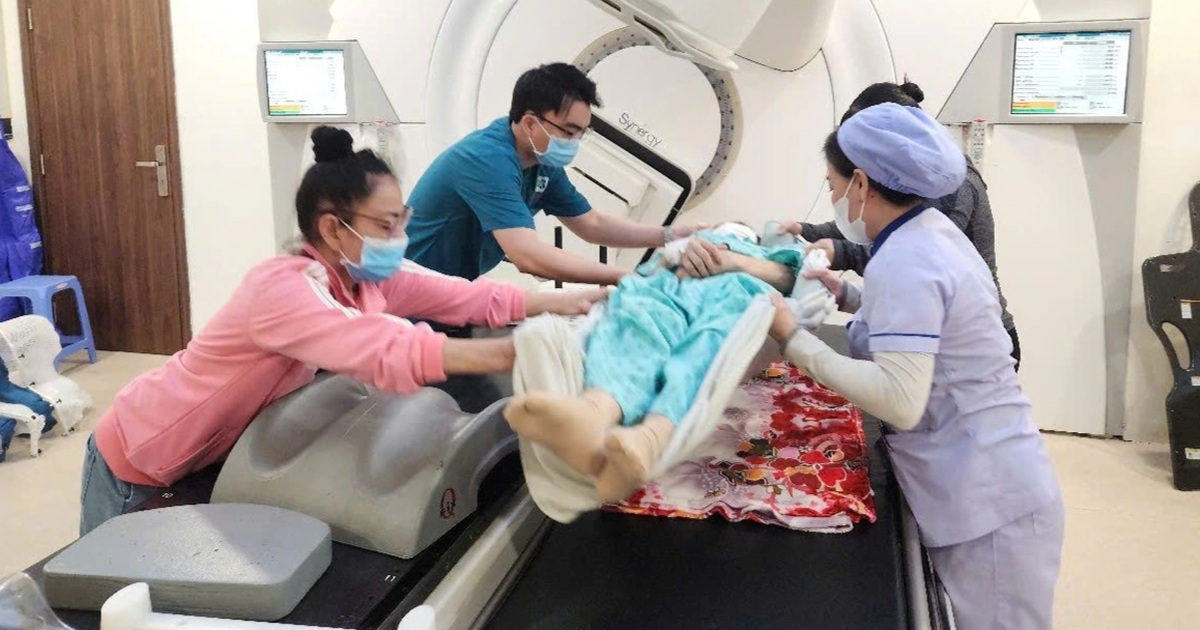Ho Chi Minh City Oncology Hospital’s Facility 2 Sees a Sharp Increase in Patients
Sharing with reporters on the sidelines of the “Enhancing Cancer Registry Capacity” workshop recently held in Ho Chi Minh City, Dr. Vo Duc Hieu, Deputy Director of Ho Chi Minh City Oncology Hospital, stated that the number of patients seeking treatment at the hospital’s Facility 2 has increased significantly in recent times.
This surge has led to a corresponding rise in costs for medicine, medical supplies, and specialized techniques.
Explaining the reasons behind this reality, Dr. Hieu noted that since July 1st, the administrative boundary merger between Ho Chi Minh City and the former provinces of Ba Ria – Vung Tau and Binh Duong has made it convenient for residents from these two areas to be directly referred from primary care to Ho Chi Minh City Oncology Hospital for treatment.
Additionally, according to Decision No. 768/QD-SYT by the Ho Chi Minh City Department of Health regarding the adjustment of the Oncology Hospital’s planned bed count, Facility 2 has added 200 beds (increasing from 1,000 to 1,200 beds).
Furthermore, the hospital’s implementation of new, highly effective treatment techniques, along with enhanced health insurance payment policies for on-demand services in clinical departments, has also contributed to the increased number of outpatient visits and the average cost per visit.
Leaders of Ho Chi Minh City Oncology Hospital observe that the increasing rate of cancer cases in Vietnam generally reflects a combination of several factors.
Firstly, increased life expectancy. As the average life expectancy for Vietnamese people rises (currently around 75 years), it means more individuals are entering the high-risk age group for cancer (over 50-60 years old).
Secondly, unfavorable lifestyle changes, such as high rates of smoking and alcohol consumption, decreased physical activity leading to increased overweight and obesity, frequent consumption of processed foods, and insufficient intake of vegetables and fiber, all contribute to a rise in cancers like colorectal, breast, liver, pancreatic, and esophageal cancers.
Thirdly, living environments and working conditions still pose many risks, closely linked to lung, liver, bladder, and blood cancers. Fourthly, low cancer screening rates often lead to many people being diagnosed at advanced stages of the disease.
The Crucial Role of Population-Based Cancer Registry Data
According to the World Health Organization (WHO), cancer registration is a core and “backbone” component of national cancer control strategies. Data from population-based cancer registries (PBCR) serves as a foundation for healthcare facilities to inform evidence-based policy decisions.
Specifically, PBCR helps identify the true burden of cancer in each locality by gender, age, and cancer type; helps detect trends of increasing or decreasing disease over time, thereby prioritizing resources for prevention and control; and identifies high-risk groups, aiding in the design of targeted screening programs.
PBCR also helps evaluate the effectiveness of intervention programs such as HPV vaccination, anti-smoking campaigns, and breast/cervical/colorectal cancer screening; provides evidence for forecasting future disease burdens, assisting in the planning of hospital networks, human resources, and equipment.
Dr. Bui Duc Tung, from the Department of Line Management at Ho Chi Minh City Oncology Hospital, noted that information systems in major hospitals in Ho Chi Minh City have achieved a high level of digitalization with unified data standards. Over 90% of hospitals have electronic systems, creating a rich and structured data source.
Additionally, many facilities have internal data connection portals, ready to integrate with a population-based cancer registry platform.
However, there are also many challenges in developing PBCR in Ho Chi Minh City, such as its large and highly mobile population, which requires clear residency determination processes; and the developed private sector, which needs mandatory reporting mechanisms.
To advance cancer registration, Dr. Tung suggested expanding the network to many provinces and cities; applying international standards to assess completeness and timeliness; linking data; digitizing and applying information technology; implementing survival registration; and enhancing international cooperation.



